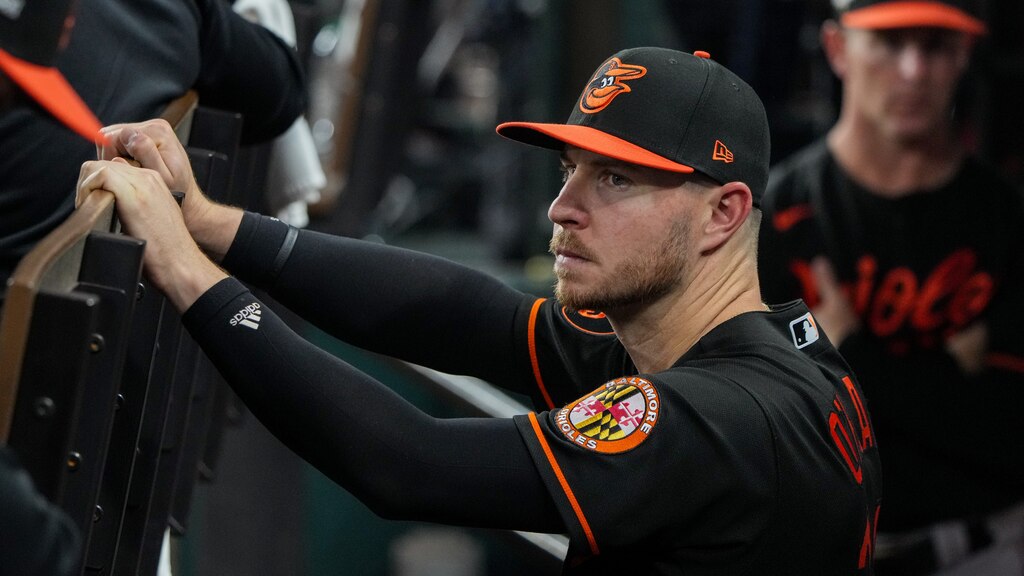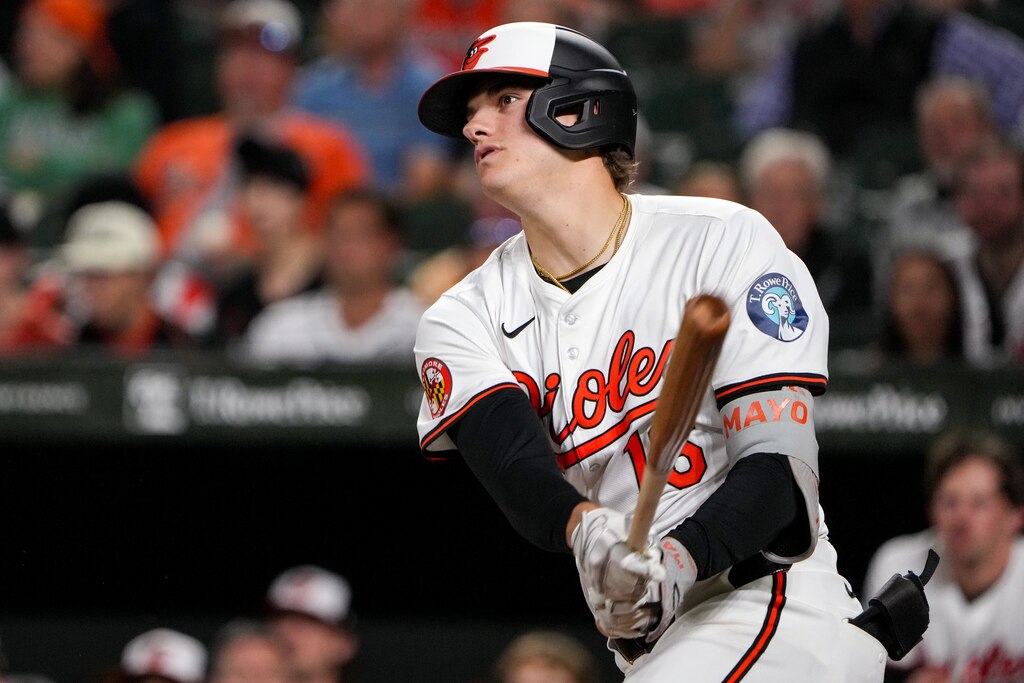It was probably over a year ago when the sentiment was relayed to me, but it’s no less pertinent now.
An Orioles official I ran into at a game noted how challenging it was to decide, basically, when it was time to move on from good, sometimes even very good, major leaguers in favor of younger and potentially better ones — and that was even more of a conundrum as the team was expected to win consistently.
We’ve seen how that has played out in real time the last few seasons as only a handful of Orioles call-ups have earned regular roles while other rookies ended up in bench roles, waiting patiently for their time.
The club will be having those discussions again and potentially making those lineup decisions for manager Brandon Hyde at a few positions. First base is going to be among the most fascinating.
A spot that has been the domain of Ryan Mountcastle for the last four seasons, with Ryan O’Hearn deputized at times, could easily remain that in 2025. Mountcastle’s estimated arbitration salary, according to MLBTradeRumors.com, is $6.6 million, with a club option for O’Hearn worth $8 million. The Orioles paid Anthony Santander $7.4 million a year ago for commensurate production, so it’s not as if in a vacuum that’s more than the Orioles would pay for a bat-first corner player.
Where it gets complicated is the fact that each has an heir already on the roster, with Heston Kjerstad farther ahead as an O’Hearn replacement than Coby Mayo is as a successor to Mountcastle. Still, if the Orioles are looking to upgrade other parts of the roster, this feels like one where they could shift some resources away from and go younger, especially if a steadier Santander replacement for right field comes at a hefty cost.
Read More
Although Kjerstad has been tapped as a potential stand-in for Santander should the Orioles not bring their All-Star slugger back, and indeed played more outfield than first base in the minors this year, it feels as if he could have a similar role to O’Hearn’s in 2025 without the Orioles missing a beat. That would also allow the club to have flexibility to replace Santander with that caliber of producer if he finds free agent riches elsewhere.
The pre-concussion version of Kjerstad was a good one, as Hyde noted in his season-ending remarks. He had an OPS of 1.141 with three home runs in 43 plate appearances from his June 24 call-up until he was hit July 12, which is the kind of hot streak that allows one to reasonably occupy one of those run-producing spots in a major league lineup.
O’Hearn also has that in him, even as the power production waned down the stretch. He still ended up around league average on offense in August and September despite a falloff in his slugging percentage.

The same, to an extent, happened with Mountcastle, who missed time with a wrist injury in the second half but was well above average in the first half. He adds superior defense at first base and was among the club’s most productive situational hitters. That’s a lot to move on from for what’s ultimately a modest raise in salary from this year’s $4.14 million, and I’d be surprised if the Orioles did. He’s a good player who was missed when he wasn’t in the lineup this year and would be next year if he was on a different club.
Mayo, another right-handed-hitting potential first base convert who spent most of his minor league career on the other side of the infield, would be part of the reason if the Orioles ultimately choose to do that. It’d be bold to do so, considering what we saw from Mayo in his major league stints; he was 4-for-41 with 22 strikeouts against just four walks, which at age 22 is hardly cause for concern but isn’t exactly the kind of performance that warrants replacing a borderline All-Star in the near future.
Still, general manager Mike Elias’ comments that first base was at this point Mayo’s best position despite him continuing to get more developmental time at third base were telling. The ability to play third base in a vacuum and the ability to do so when competing with Jordan Westburg and Ramón Urías for a spot on the roster are two different things, so Mayo’s shift toward first may become more pronounced going forward.
I once heard his upside described by someone as Mountcastle during that stretch of 2023 when he returned from vertigo with a far better approach than he’d ever had before. Consider, though, Mayo’s last two professional seasons: 2022 when he was challenged to end the season at Double-A Bowie before returning to dominate the next year, and then similarly when he took time to adjust to Triple-A Norfolk to end 2023 and was overwhelming once he returned for 2024.
The majors are a different beast, but Mayo has demonstrated the ability to use his offseasons to improve where he needs to. If this isn’t a decision the Orioles are making this winter, it might be one that creeps up on them early next season.

There was a time when getting into the salary range of O’Hearn and Mountcastle resulted in an almost automatic trade from the Orioles, with a league-minimum player often the replacement regardless of whether said deputy was good.
This isn’t that time anymore — or at least it hasn’t been. Santander made it through four years of arbitration raises, while Austin Hays and Cedric Mullins made good money this year as well.
There will be an expectation, set by Elias but reinforced by the wealth of the new ownership group under David Rubenstein, that the team will spend more this offseason. That could be in free agency and through trades, but also through raises to its own players. To change the complexion of the team by moving some of the players who would be owed decent salaries would feel regressive, even if the goal was to create opportunities for players who might have higher ceilings.
It’ll be a tricky balance to strike. But few of their decisions will be as uniquely of this moment in time for the Orioles as this one.



Comments
Welcome to The Banner's subscriber-only commenting community. Please review our community guidelines.